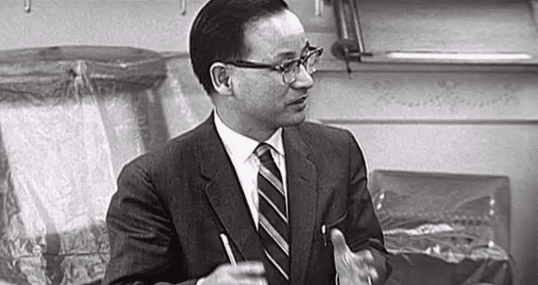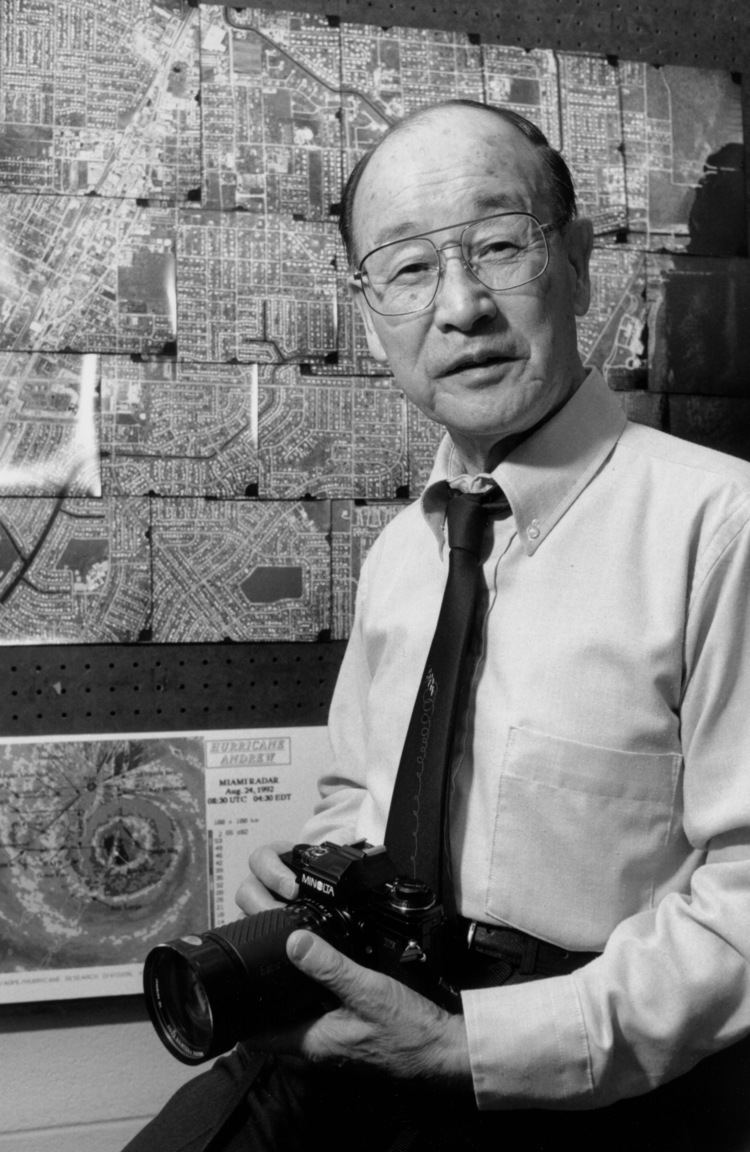Role Researcher | Doctoral advisor Shigekata Syono Name Ted Fujita | |
 | ||
Born October 23, 1920, Kitakyushu, Japan ( 1920-10-23 ) Citizenship Japan, United States (1968) | ||
Notable students Gregory S. Forbes Similar Roy Leep, Edward Norton Lorenz, Jule Gregory Charney Died November 19, 1998 (aged 78) Chicago, Illinois, U.S. | ||
Theodore 'Ted" Fujita's research into the Jordan Iowa Tornado 6-13-1976
Tetsuya Theodore "Ted" Fujita (藤田 哲也, Fujita Tetsuya, October 23, 1920 – November 19, 1998) was a prominent Japanese-American severe storms researcher. His research at the University of Chicago on severe thunderstorms, tornadoes, hurricanes, and typhoons revolutionized the knowledge of each.
Contents
- Theodore Ted Fujitas research into the Jordan Iowa Tornado 6 13 1976
- Dr Ted Fujitas Presentation At The Third Tornado Symposium April 4 1991
- Biography
- Overview
- World War II
- References

Dr. Ted Fujita's Presentation At The Third Tornado Symposium April 4, 1991
Biography

Fujita was born in Kitakyushu, Fukuoka Prefecture, Japan. He studied at Kyushu Institute of Technology and was an associate professor there until 1953, when he was invited to the University of Chicago on the invitation of Horace R. Byers who had become interested in his research, particularly his independent discovery of the cold-air downdraft.
Overview

Fujita is recognized as the discoverer of downbursts and microbursts and also developed the Fujita scale, which differentiates tornado intensity and links tornado damage with wind speed.
Fujita's best-known contributions were in tornado research; he was often called "Mr. Tornado" by his associates and by the media. In addition to developing the Fujita scale, Fujita was a pioneer in the development of tornado overflight and damage survey techniques, which he used to study and map the paths of the two tornadoes that hit Lubbock, Texas on May 11, 1970. He established the value of photometric analysis of tornado pictures and films to establish wind speeds at various heights at the surface of tornado vortices. Fujita was also the first to widely study the meteorological phenomenon of the downburst, which can pose serious danger to aircraft. As a result of his work, pilot training worldwide routinely uses techniques he pioneered to provide instruction to students.
Fujita was also largely involved in developing the concept of multiple vortex tornadoes, which feature multiple small funnels (suction vortices) rotating within a larger parent cloud. His work established that, far from being rare events as was previously believed, most powerful tornadoes were composed of multiple vortices. He also advanced the concept of mini-swirls in intensifying tropical cyclones.
The American Meteorological Society (AMS) held the "Symposium on The Mystery of Severe Storms: A Tribute to the Work of T. Theodore Fujita" during its 80th Annual Meeting in January 2000 and also published a special issue of its flagship journal, the Bulletin in January 2001. After Fujita died, Storm Track magazine released a special November 1998 issue, "A Tribute To Dr. Ted Fujita" and Weatherwise published "Mr. Tornado: The life and career of Ted Fujita " as an article in its May/June 1999 issue.
World War II
Fujita in 1945 was residing in Kokura, the primary target of the first nuclear strike in human history by the plutonium bomb (nicknamed Fat Man) and the secondary target of the first nuclear strike by the uranium one. On 6 August 1945, the uranium bomb was dropped on the primary target at Hiroshima. Three days later on 9 August 1945, the primary target was Kokura. However, due to cloudy weather and smoke from the neighboring city of Yahata the plutonium bomb was delivered on the secondary target, the city of Nagasaki. From this, the phrase "Kokura's Luck" came about, referring to when a great tragedy is avoided when the person or party is not even aware of the tragedy to begin with. Furthermore, studying the damage caused by the nuclear blasts contributed to his understanding of downbursts and microbursts as "starbursts" of wind hitting the Earth's surface and spreading out.
